72 F. high on Sunday.
70 F. average high May 18.
81 F. high on May 18, 2013.
.40" rain predicted next 24 hours (NAM model).
80 F. high possible tomorrow, again next weekend (first time since September 30, 2013).
Lipstick
The
forecast calls for lukewarm smiles into Memorial Day. A lake-worthy
holiday weekend is brewing, but pack your fur-lined Speedo. That water
is COLD! After yesterday's dip my voice is now a full octave higher.
Putting
a positive spin on our tenuous spring is the meteorological equivalent
of putting lipstick on a pig. But there have been a few benefits: fewer
severe storms - a delayed allergy and bug season. A temptation to want
to talk about anything BUT the weather.
The atmosphere has an
uncanny ability to balance things out over time, evening out the pain
& pleasure. With a strong El Nino brewing I'm betting on an
unusually mild autumn. I also suspect next winter won't look anything
like what we just muddled through.
A surge of warmth sparks
showers and possible thunder today. Have a Plan B for the PM hours. The
rest of the week looks dry, a slight cool-down midweek giving way to
upper 70s Saturday & Sunday; probably the nicest days of the holiday
weekend. T-storms may rumble into your favorite lake resort on Memorial
Day.
No severe storms brewing, no sizzling heat or drippy dew
points. Drought has faded - ample soil moisture statewide. Things are
looking up. About time huh?
* vaguely troubling photo credit above:
jacket2.org.
And Suddenly It's May.
After a few failed starts it would appear that spring (verging on
summer) is here. Today will be a bit cooler with a stiff southeast wind
and a few showers, but 80F is possible Tuesday, again next weekend. A
holiday weekend at that. Dry weather is likely from Tuesday into Sunday,
a few T-storms may drift in on Memorial Day.
Monday Showers - Hints of June Tuesday.
The last 80F reading in the Twin Cities was September 30. We're very
overdue - this time people may not be quite so quick to complain about
the heat and humidity. Graphic:
Twin Cities National Weather Service.
Tuesday, 4 PM.
It's time for New England and parts of the west to feel the chill, as a
ridge of high pressure pushes north across the Plains. Highs tomorrow
top 100F from southern Kansas into central Texas; 80F readings possible
as far north as the Twin Cities and Chicago. NAM guidance: NOAA and
HAMweather.
84 Hour Future Radar.
NOAA's 12km NAM model shows a few showers and possible thunder pushing
across the Upper Midwest into the Great Lakes today and early Tuesday,
then drier weather returning for the rest of the week. A stalled storm
east of the Canadian Maritimes rotates a cold rain into northern New
England, a few showers kick up some dust near Lake Tahoe and Reno, but
it won't be the soaking California needs.
Most Destructive Flood In Over 120 Years Ravages Serbia, Power Plant In Jeopardy.
3 months worth of rain fell in less than 3 days last week as a storm
stalled over the Balkans, creating widespread and historic flooding.
Here's an excerpt from
inquisitr.com: "
Thousands
of people were forced to abandon their homes Saturday as the Sava River
broke through defenses and began to flood Serbia, Croatia, and Bosnia.
As the flood worsened, waters rising up to the second floor of houses,
people who had not yet been evacuated had to seek safety on their roofs.
Many of the homes in the affected area of Serbia that were not
destroyed are without electricity and drinking water..."
* The BBC has a video update
here.
Thousands
of people were forced to abandon their homes Saturday as the Sava River
broke through defenses and began to flood Serbia, Croatia, and Bosnia.
As the flood worsened, waters rising up to the second floor of houses,
people who had not yet been evacuated had to seek safety on their roofs.
Many of the homes in the affected area of Serbia that were not
destroyed are without electricity and drinking water.
Rain has been falling in Serbia, and its surrounding countries, for the past 4 days.
Read more at http://www.inquisitr.com/1256369/most-destructive-flood-in-over-120-years-ravages-serbia-power-plant-in-jeopardy/#CTauhRMA1aemICIc.99
San Diego Wildfires Leave Haunting, Burned-Out Landscapes. Here's an excerpt of a photo essay from
TIME.com: "
At
least twelve separate fires raged through 20,000 acres of land in San
Diego County, Calif. this week, leaving scorched hillsides and piles of
ashes where houses once stood. Most blazes were under control Saturday,
with at least one man charged with arson for starting a fire."
Photo credit above: "
A
longtime exposure shows smolderings remains of overnight fires on the
hillsides of San Marcos, San Diego county, Calif., May 16, 2014." (Stuart Palley—EPA) .
Parched: A New Dust Bowl Forms in the Heartland.
Could we have another Dust Bowl similar to the extended ecological
catastrophe of the 30s? Probably not, but a regional disaster is already
evolving, especially Oklahoma and Texas. Here's an excerpt from
National Geographic:
"...It is just as dry now as it was then, maybe even drier," Fowler
says. "There are going to be a lot of people out here going broke."
The
climatologists who monitor the prairie states say he is right. Four
years into a mean, hot drought that shows no sign of relenting, a new
Dust Bowl is indeed engulfing the same region that was the geographic
heart of the original. The undulating frontier where Kansas, Colorado,
and the panhandles of Texas and Oklahoma converge is as dry as toast.
The National Weather Service, measuring rain over 42 months, reports
that parts of all five states have had less rain than what fell during a
similar period in the 1930s..."
Photo credit: "
A farmer walks in a dust storm on drought-stricken lands near Felt, Oklahoma, on August 1, 2013." Photograph by Ed Kashi, VII.
Moore Tornado Victims Rebuild With New Rules.
Yes, strengthening building codes in the heart of Tornado Alley sounds
like a very good idea; here's an excerpt of a story and video at
NBC 5 in Dallas: "...
Burkhart's home was one of nearly 1,200 that were damaged or destroyed.
The storm generated enough debris to cover the basketball court at the
American Airlines Center in Dallas in a stack nearly two miles high.
Parts of Moore now look like a new housing development in North Texas.
But with the new homes, come new rules. In April, Moore became the first city in the country to require all new homes to stand up to 130 mph winds with stronger frames, additional bracing and sturdier garage doors..."
Moore Tornado Changed Reality.
Many tornado survivors report symptoms very similar to PTSD, Post
Traumatic Stress Disorder, the same thing returning war veterans often
experience. Here's an excerpt from
enidnews.com: "...
The
giving of strangers has been as overwhelming as the storm,” Amber said.
“Our every need has been met.” One stranger found a locket that Nathan
had given Amber. Another person, who lives in Tulsa, found a sonogram
picture of Zoe and Sophie in his backyard and was able to return it to
the Kriesels. The aftermath of the tornado has been somewhat difficult
for Zoe, Sophie and Kaley. Loud noises like trucks, wind and
thunderstorms scare them. Amber described one instance during a trip to
MidFirst Bank, when it began raining suddenly and her daughters began to
cry and become emotionally upset..."
Photo credit above: "
This
combination of aerial photos shows the path of destruction on May 21,
2013, the day after a massive tornado hit Moore, Okla., left, and the
same view on Thursday, May 15, 2014, right." (AP Photo).
Shelter From The Storm: Cannon Blasts Test Walls for Tornado Safe Rooms. I had no idea this was going on in Madison, Wisconsin. Here's an excerpt from a story at
The Milwaukee Journal-Sentinel: "
Shooting
two-by-fours out of a cannon seems like a waste of perfectly good wood,
but a lot can be learned from splinters that might one day save people
from a tornado's deadly debris. And to frightened folks freaking out in
the middle of a tornado, it doesn't matter what researchers do to ensure
their safety, they just want to survive. In a large building at the Forest Products Laboratory in Madison,
researchers are trying to simulate the effects of debris whipped by
twisters. To do that, they are re-creating 250-mph winds that suck up
everything in a tornado's path and fling it in all directions..."
Photo credit above: Gary Porter. "
A
two-by-four is shot out of a cannon to simulate debris being whipped
about by 250-mph winds, during testing at Forest Products Laboratory in
Madison."
TODAY: Showers likely, possible thunder. Winds: SE 20. High: 65
MONDAY NIGHT: Showers linger, clap of thunder. Low: 57
TUESDAY: Clearing skies, hints of June. High: 79
WEDNESDAY: Plenty of sun, a bit cooler. Wake-up: 54. High: 69
THURSDAY: A mild blue sky. Very nice. Wake-up: 48. High: 71
FRIDAY: Warm sunshine. Get out of town. Wake-up: 52. High: 75
SATURDAY: Partly sunny. Go jump in a lake. Wake-up: 54. High: 78
SUNDAY: Warm sun. Feels like summer! Wake-up: 56. High: near 80
Climate Stories...
Greenland Will Be Far Greater Contributor To Sea Rise Than Expected.
Remember, we don't know what we don't know. When looking at predicted
rates of ice melt the computer models only go so far. Here's a clip from
phys.org: "
Greenland's
icy reaches are far more vulnerable to warm ocean waters from climate
change than had been thought, according to new research by UC Irvine and
NASA glaciologists. The work, published in Nature Geoscience, shows
previously uncharted deep valleys stretching for dozens of miles under
the Greenland Ice Sheet..."
Photo credit above: "
Penny
Ice Cap outlet glacier on Baffin Island, Nunavut, Canada. Penny Ice Cap
was previously surveyed from the air by the Airborne Topographic Mapper
and CReSIS radar instrument teams in 1995, 2000 and 2005." Credit: Michael Studinger/ NASA.
Climate Change Will Force Us To Abandon Coastal Cities. We Better Start Preparing Right Now.
Alarmist hype? I sure hope so. The future island of Miami? These
scenarios may take many decades, probably centuries, but a significant
amount of sea level rise is already in the pipeline. Heres' an excerpt
from
New Republic: "...
Barring
some extraordinary advances in technology that we currently do not
foresee,” Robert Hartwig, the president of the Insurance Information
Institute, said, “you are left with the options of retreating from
coastal areas not only in the United States, but around the world, or
building fortifications against rising sea levels that would make the
projects that we now see in places like the Netherlands look like
child’s play...”
Greenland's
icy reaches are far more vulnerable to warm ocean waters from climate
change than had been thought, according to new research by UC Irvine and
NASA glaciologists. The work, published today in
Nature Geoscience, shows previously uncharted deep valleys stretching for dozens of miles under the Greenland Ice Sheet.
Read more at:
http://phys.org/news/2014-05-greenland-greater-contributor-sea.html#jCp
Greenland's
icy reaches are far more vulnerable to warm ocean waters from climate
change than had been thought, according to new research by UC Irvine and
NASA glaciologists. The work, published today in
Nature Geoscience, shows previously uncharted deep valleys stretching for dozens of miles under the Greenland Ice Sheet.
Read more at:
http://phys.org/news/2014-05-greenland-greater-contributor-sea.html#jCp. Here's the introduction to a story at
The Columbus Dispatch: "
Increased
temperatures from climate change and growing urbanization are slowing
the development of some native Ohio butterflies, a new study warns. This
could threaten the number of eastern swallowtails and seven other Ohio
natives while helping to spread invasive butterfly species, said Sarah
Diamond, an assistant professor of biology at Case Western Reserve
University and lead author of the study published online in the journal
Ecology..."
Photo credit above: "Brooke LaValley | DISPATCH PHOTOS. "
Carrie
Morrow, a Metro Parks employee, uses her binoculars to spot butterflies
during a walk at Battelle Darby Creek Metro Park in western Franklin
County."
Climate Change Lawsuits Filed Against Some 200 U.S. Communities.
This is the legal tip of the iceberg. Yes, there will be plenty of
billable hours for aggressive lawyers uncovering liability related to
more extreme waether events sparked by a changing, morphing, more
volatile climate in the years to come. Here's an excerpt from
The Christian Science Monitor: "
Climate
change lawsuits: Farmers Insurance filed class action lawsuit last
month against nearly 200 communities in the Chicago area for failing to
prepare for flooding. The suits argue towns should have known climate
change would produce more flooding..."
Photo credit above: Chicago Tribune, which has a slightly different perspective on the suit
here.
An Illustrated Guide To Our Collapsing Antarctic Glaciers.
Quartz has a very good, visual explanation of what's really going on - here's an excerpt: "...
But
scientists think that rising sea temperatures are now eroding the ice
shelf faster than the snow can rebuild it. Intensifying southern sea
wind forces—likely a product of climate change—also exacerbate ice erosion (pdf,
p.1,141). The lighter the ice shelf becomes, the more of it starts
floating, exposing more ice to water. That process pushes the “grounding
line”—the point where the ice separates from land and begins to
float—further inland..."
Screenshot from presentation: "Recent Changes in Greenland & Antarctica," Joughin & Poinar.
Inaction on Climate Change Risks Global Chaos. Here's a clip from a story at
Forbes that made me do a double-take: "...
What
a growing chorus of top generals and admirals and senior business
executives is saying is this: The proliferation of renewable energy
sources, the spread of energy efficiency and conservation measures, and
the reduction of reliance on fossil fuel imports from volatile (or
hostile) states aren’t just feel-good green policies; they’re critical
strategic responses to the harsh realities of climate change and growing
resource conflicts. The world leaders who would resist a price on
carbon include Vladimir Putin, whose expansionist tendencies and
contempt for the censure of Western democracies is based on his
country’s energy might..."
Global Warming Behind Loss in Area of Glaciers in Himalayas.
NDTV.com has the story; here's the introduction: "
The
area coverage of the glaciers in the Nepal Himalayas has decreased
nearly 12 times due to global warming, which raising serious concerns
for the environmental balance of the region, a study released in Nepal
said today. The area coverage has been reduced to 3,902 km in 2010 from
51,687 km in 1980 due to shrinkage and fragmentation as a result of
global warming. However, the number of glaciers in the Nepal Himalayas
has increased to 3,808 in 2010 from 3,430 glaciers in 1980, the report
said..."
Photo credit above: "
In this Oct. 27,
2011 file photo, the last light of the day sets on Mount Everest as it
rises behind Mount Nuptse as seen from Tengboche, in the Himalaya's
Khumbu region, Nepal." AP Photo.
World's Top Companies Already Feeling Impacts of Climate Change. Bloomberg Businessweek has the story; here's a clip: "
Drought,
hurricanes and rising seas are becoming more significant threats to the
world’s biggest companies and the risk is accelerating, according to
the Carbon Disclosure Project. Companies planning for various threats
related to climate change say they’re grappling now with about 45
percent of the potential risks, or will be within five years, according
to a report issued today by the London-based non-profit group. That’s up
from 2011, when members of the Standard and Poor’s 500 Index expected
26 percent of the potential risks to affect them within five years..." (File photo: Wikipedia).


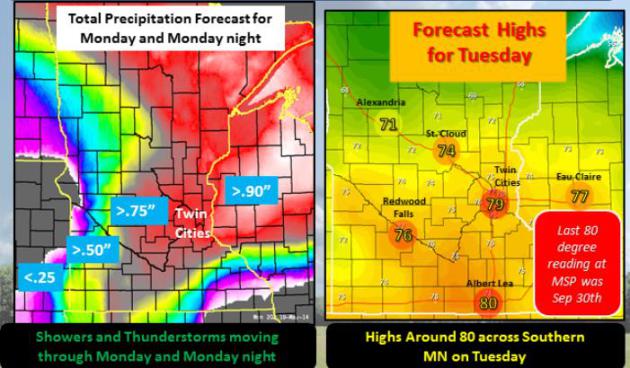

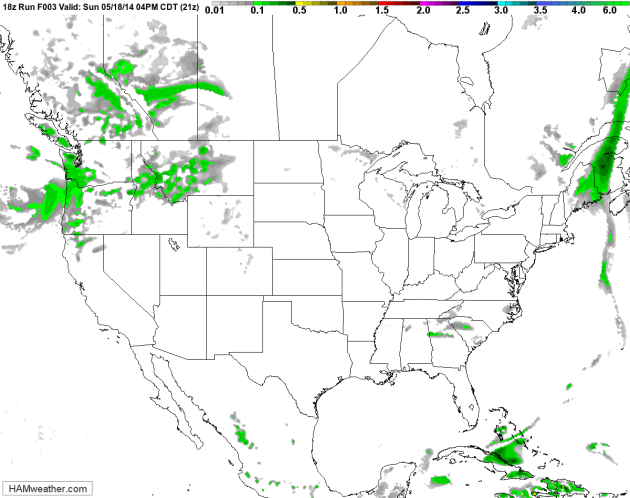




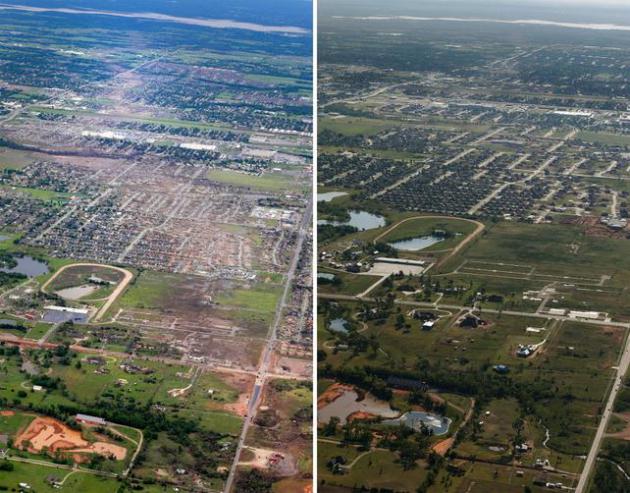

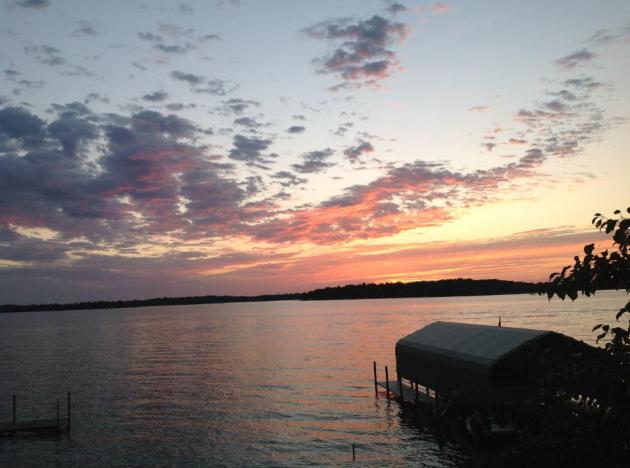
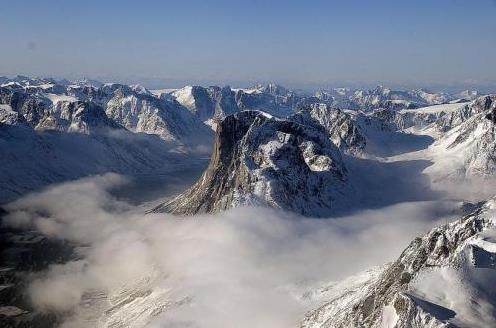
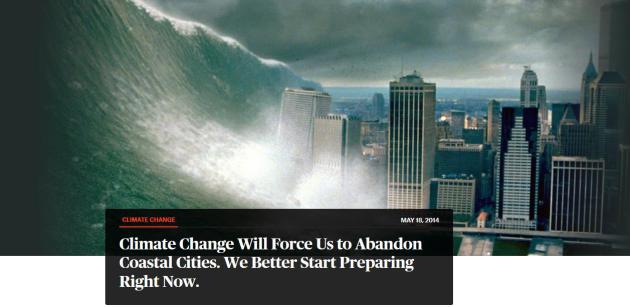
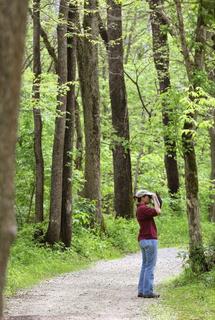

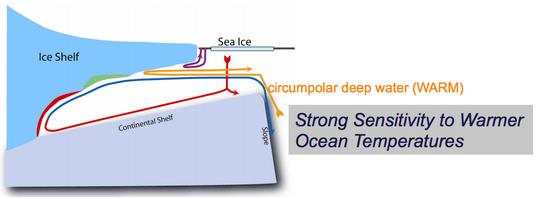
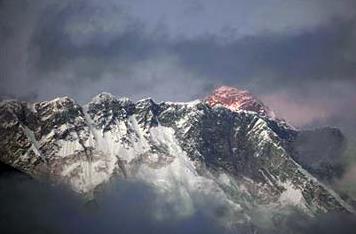
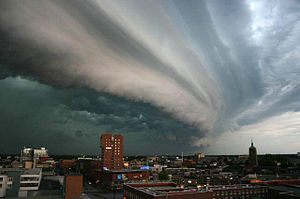
No comments:
Post a Comment